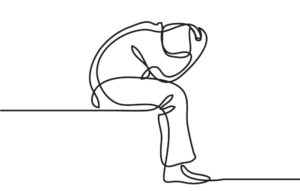
Tens of thousands of men struggle daily with their mental health. For some, like Joseph Pierre, a third-year engineering student at Florida State University, it’s an ongoing battle, and it can get pretty scary when you don’t know exactly what it is you’re dealing with.
“I struggle with anxiety and persistent depressive disorder,” Pierre said. “I know that now, finally. But only recently I realized that I’ve had this problem since I was in highschool and I didn’t know because it wasn’t talked about much in my community, especially among men.”
“I remember being scared and even ashamed of how I felt, thinking it was a sign of weakness, when in fact depression is very common and a real threat to your overall health,” he added.
It’s not uncommon for some men to refrain from opening up and speaking about their mental health, getting help, or even going out to look into suicide prevention. This is due to the idea of masculinity and what it should look like.
But in truth, this lack of vulnerability has pained more men than it has helped. For generations, there has been a wide misconception and stereotype that men are supposed to be strong, tough, and brave; feeding into the saying, “Boys don’t cry.”
“Men do cry,” Pierre said. “I cry, sometimes I’ve had to. And I am still standing here, a man. I hate that saying because it just feeds into nonsense that men cannot show vulnerability or helplessness. That’s why so many men die each year at the hands of their own mental health, suicide. Men are about three times more likely to die by suicide than women.”
It’s true. Reported by WHO, the World Health Organization, in 2016 there were an estimated 793,000 suicide deaths worldwide and most were men. Also reported by WHO, about 40% of countries experience more than 15 suicide deaths per 100,000 men, while only about 1.5% of countries show a rate that high for women.
In 2019, it was reported by the American Foundation for Suicide Prevention (AFSP) that men died by suicide 3.63 times as often as women. Ironically, statistical trends have consistently shown that women tend to have higher rates of depression and other mental health diagnosis than men. Even going as far as being more likely to attempt suicide. However, numbers still persist with men leading in suicide deaths. So how could this be?
There are several underlying factors that contribute to these numbers. First, men are less likely to be willing to speak up on behalf of their mental health out of fear, shame, and pride. And even if more did, there are still fewer facilities dedicated to educating and counseling men on their mental health in comparison to women. In addition, male suicide attempts are typically more violent, making it easier to be carried out before someone can intervene.
“It’s a long road to recovery,” Pierre said. “Trust me, I know. But after speaking to someone about what I was facing I can honestly say things got better. I had to break that concept that as a man I can’t ask for help, just be strong and figure it out. Thinking like that would’ve killed me. I reached out to a therapist and I have been getting so much help. I wish I did it before, you know opening up and being real with myself but I’m here now, I guess that’s growth.”
There are so many ways you can help yourself or even someone you know struggling with their mental health. And as a community, spaces can be made to help raise more awareness for men battling mental health. Counseling, therapy, meditation and connecting with others are a few ways you can work to improve your mental health. In truth, mental health issues can look like all sorts of things such as PTSD, anxiety, depression, ADHD, and social withdrawal. Talking about it with a trusted loved one, friend, and especially a professional, can save your life or someone you know.